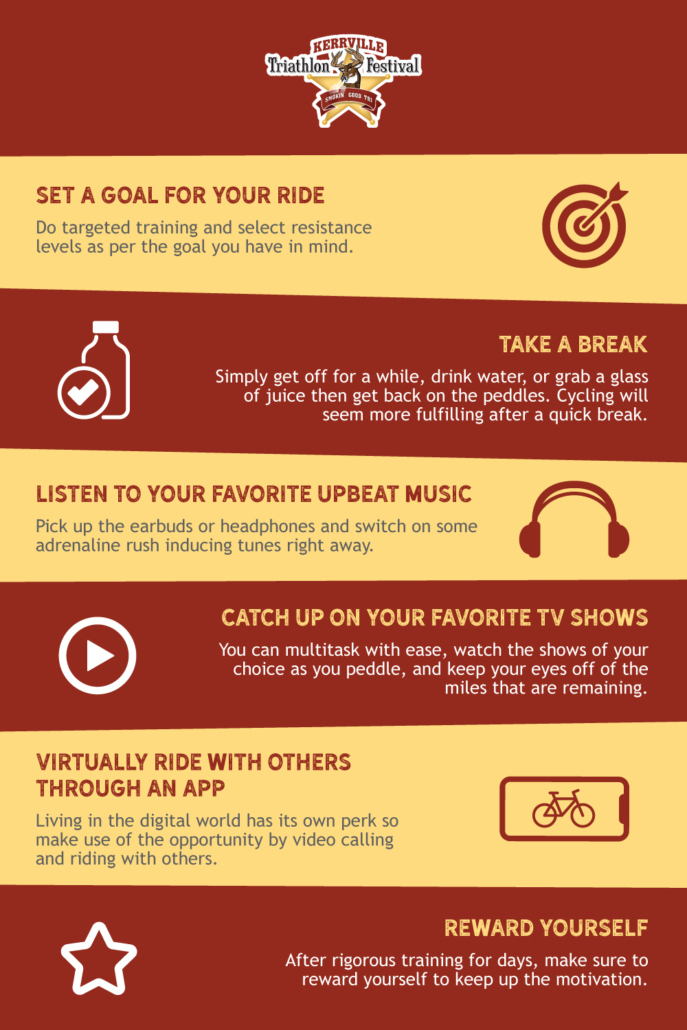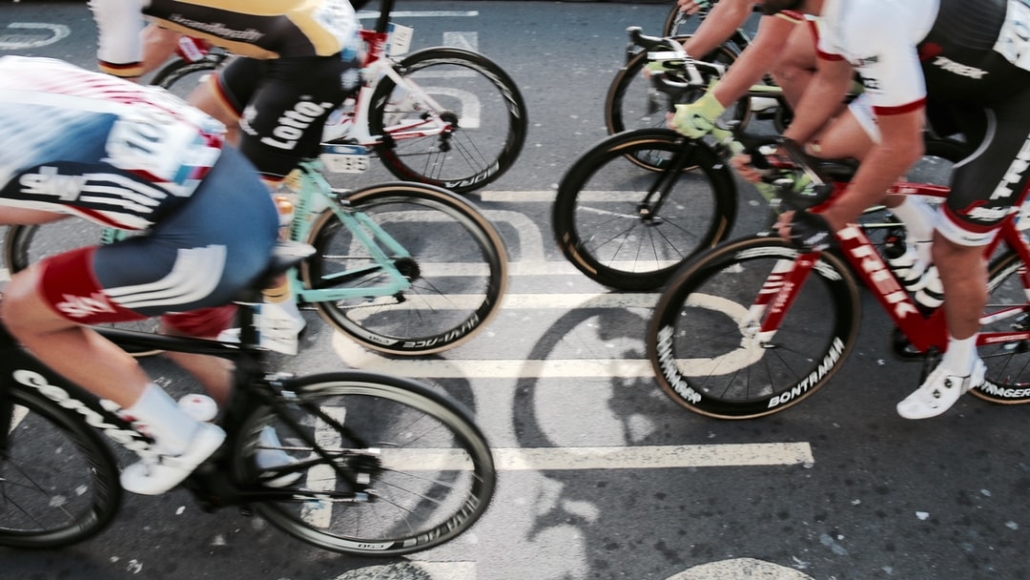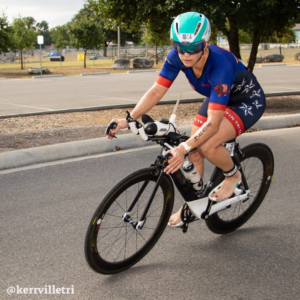Learn about aqua jogging and how it can keep you going
Running is a critical component of all training plans and its one-third of triathlon. It’s also the leading recreational and competitive sport that results in some form of injury. This includes sprains, plantar fasciitis, patellofemoral pain syndrome, stress fracture, etc. and they happen to everyone. There’s good news for triathletes experiencing a running-related injury in that they can keep training with aqua jogging. This is an effective form of training that will help you continue training and improve your cardio fitness. Aqua jogging provides a beneficial alternative to running without worsening an existing injury or increasing the stress on your joints. It’s also a great addition to your first 70.3 training plan or the perfect alternative to a 60-minute run.
Aqua jogging explained
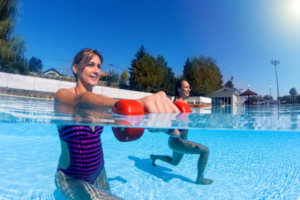
Also called deep water running, this is a cardio exercise that is similar to jogging underwater. It’s performed two ways:
– running laps in the shallow end of a pool
– wearing a flotation belt around your midsection and jogging in deeper water
The flotation belt keeps you suspended in deeper water so your legs and arms move freely and mimic running. Your head remains above the water during aqua jogging so you can focus on your breathing as if you were running. Both of these can also be done using light, water-proof weights.
Benefits of aqua jogging
1) Injury rehab
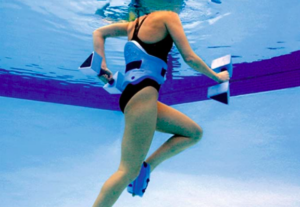 This is a top training choice for injured runners. When wearing a flotation device, aqua jogging takes all the pressure off your lower body. It enables you to work out without experiencing any discomfort or pain from your injury. If you’re running in a shallow pool, the impact on your lower body will be significantly reduced.
This is a top training choice for injured runners. When wearing a flotation device, aqua jogging takes all the pressure off your lower body. It enables you to work out without experiencing any discomfort or pain from your injury. If you’re running in a shallow pool, the impact on your lower body will be significantly reduced.
2) Triathlon training
An important feature of aqua jogging is that it replicates running on land. Triathletes include this even if they aren’t injured, especially before or after a swim. You’re already in the water and you can continue to improve your cardio output and increase your muscle strength. Think of it as a brick workout! It also helps you maintain your running form and posture, while reducing the wear and tear on your lower body. Just like swimming, aqua jogging is a full-body workout that strengthens everything and helps you improve your balance.
3) General workouts
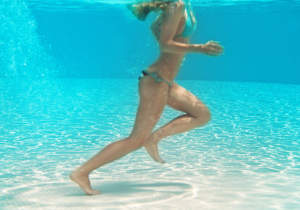 When you’re running in water the exertion is much less than on land. You don’t have to be injured or training for a triathlon to enjoy the benefits of aqua jogging. Incorporate it into your week and switch it out for a run. If you have a 60-minute run planned, try aqua jogging for 60 minutes. Your weekly mileage will be lower, but you’re still getting a significant workout without all the stress and pounding from running on the pavement.
When you’re running in water the exertion is much less than on land. You don’t have to be injured or training for a triathlon to enjoy the benefits of aqua jogging. Incorporate it into your week and switch it out for a run. If you have a 60-minute run planned, try aqua jogging for 60 minutes. Your weekly mileage will be lower, but you’re still getting a significant workout without all the stress and pounding from running on the pavement.
Aqua jogging is the ideal alternative for injured athletes. But that’s not its only use! Add it to your training plan and turn your swim into a swim/aqua jog brick workout. And if you’re not training for anything specific, this particular exercise is a nice alternative to one of your weekly runs. Just because you’re not pounding the pavement doesn’t mean you can skip foam rolling. Take care of your body, even after spending time in the water, with these 4 effective foam rolling tips.




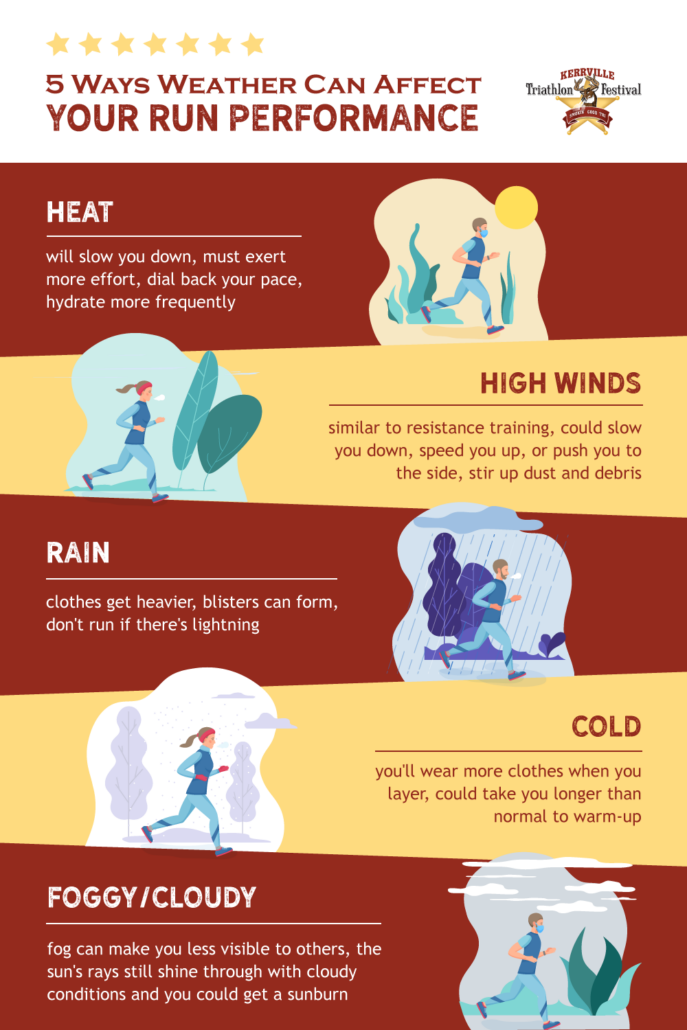









 “The Kerrville Triathlon continues to grow, exposing more triathletes to the Most Scenic Triathlon in Texas and the welcoming
“The Kerrville Triathlon continues to grow, exposing more triathletes to the Most Scenic Triathlon in Texas and the welcoming  Athletes will receive a belt buckle finisher’s medal, customized shirts, reusable custom water bottles, personalized race bibs, swim caps, a post-race meal, fruit, snacks, beer, and an opportunity to float in the Guadalupe River. Kerrville Tri is a USAT-sanction event, provides professional timing, and offers professional photography. A great volunteer crew and hundreds of supportive spectators make race day memorable for everyone involved.
Athletes will receive a belt buckle finisher’s medal, customized shirts, reusable custom water bottles, personalized race bibs, swim caps, a post-race meal, fruit, snacks, beer, and an opportunity to float in the Guadalupe River. Kerrville Tri is a USAT-sanction event, provides professional timing, and offers professional photography. A great volunteer crew and hundreds of supportive spectators make race day memorable for everyone involved.  Triathletes who can’t make it to the event can still participate through
Triathletes who can’t make it to the event can still participate through 